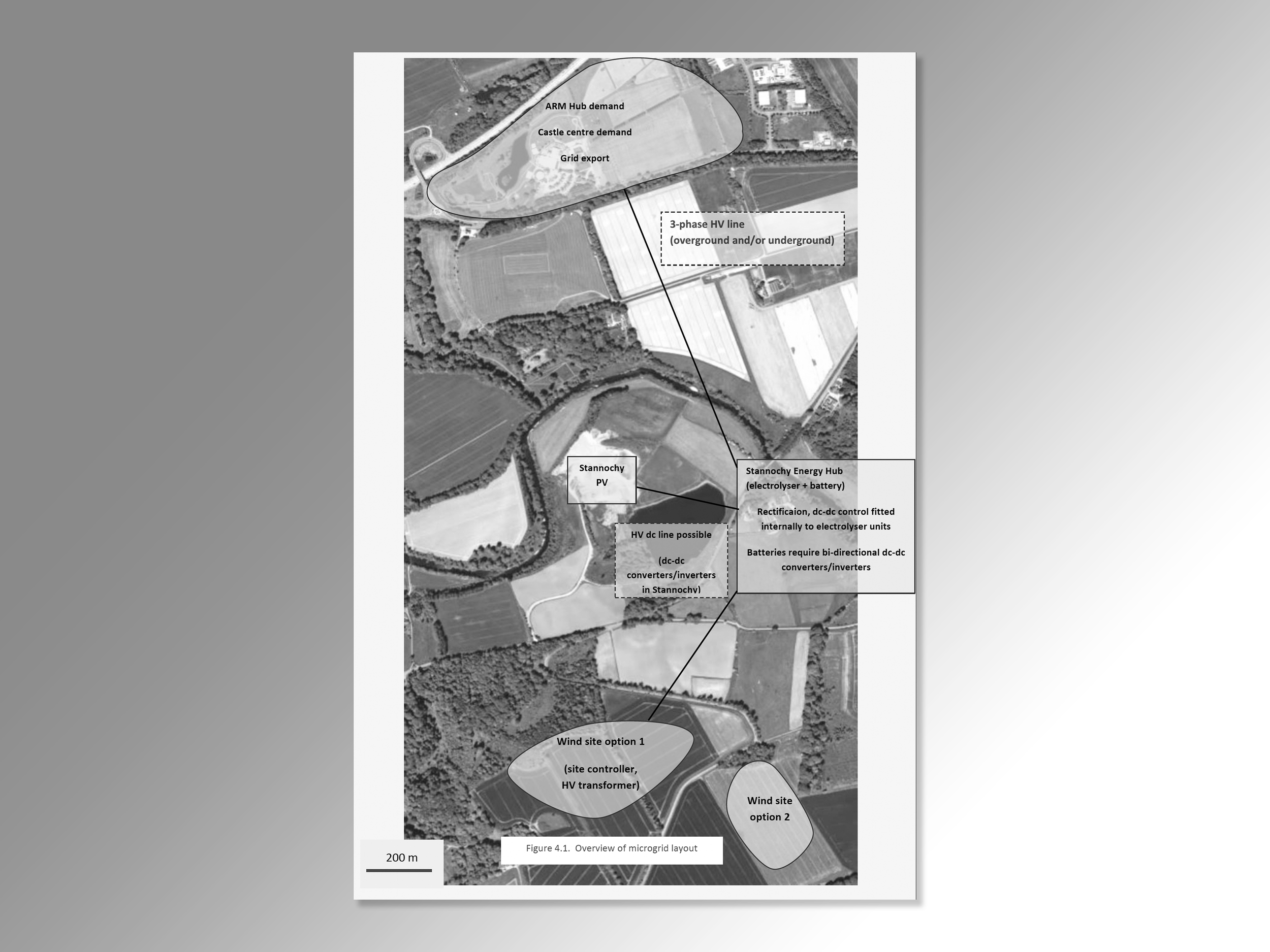Stannochy Energy Hub, Brechin
Overview of microgrid layout
December 2023
As part of our research activities into integrating clean energy with land uses, we collaborated with the University of Dundee Department of Mechanical and Industrial Engineering through a grant award from the ETP to develop a feasibility model on co-locating green hydrogen production as a clean fuel source for heavy duty vehicle use. Of particular interest was how to develop this facility within the parameters of a constrained electrical grid. This led to the study of a micro, private grid connection generation with demand and explored the scale of production over time linked to various generation, cost and price scenarios.
The project objectives were: (a) to develop theoretical computational model to simulate a balanced microgrid with H2 production from electrolysis as the primary outputs (b) to develop technical solutions for the microgrid for power generation, storage and H2 production and (c) to complete a commercial model / business plan for the H2generation/microgrid.
The project is part of our work with Dalhousie Estates and Angus Council on the Angus Rural Mobility Hub located on the A90 which has, at its core, a range of mobility services including a heavy duty vehicle refuelling to accelerate the decarbonisation of the transport sector.
We published a research paper in December into the integration of solar and photovoltaics to produce green hydrogen as a micro grid, for use as a transport fuel for the heavy duty vehicle sector. The technical and commercial model enables forecasting generation capacity linked to demand to support the development of hydrogen vehicles through the provision of levelised cost of fuel. The study provides a proof of concept to support the development of the Stannochy Energy Hub and ARM Hub.
Further Reading
The report can be found here



